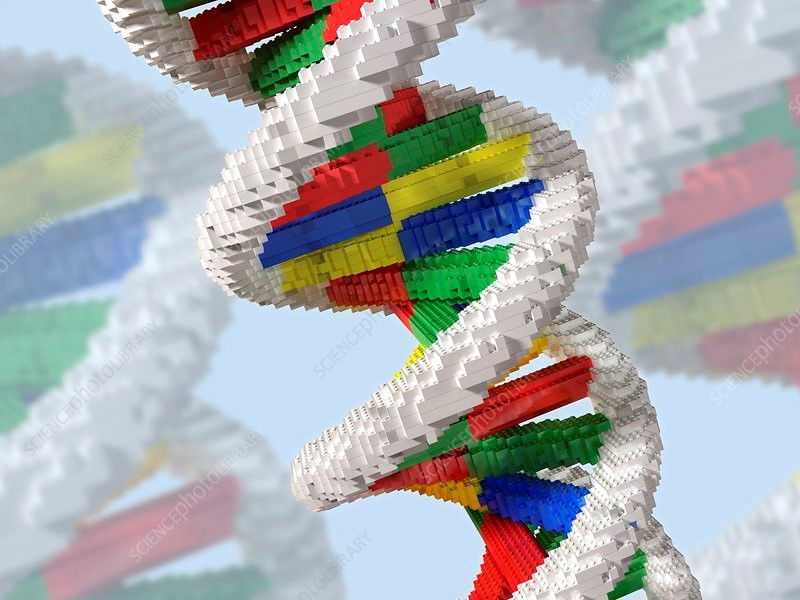What is synthetic biology?

Image source: EQUINOX GRAPHICS/SCIENCE PHOTO LIBRARY
If you have ever played with Lego, you know that with few bricks you can build many different objects and shapes. You could use the same bricks to build a house, a tree, or even an aeroplane.
Some scientists also build and design new molecular structures. Instead of using Lego, scientists can use the building blocks of life, DNA and genes (you can learn more about DNA and genes by looking at the other blog posts).
It is possible to build bacteria that are able to eat plastic or oil (which could be useful if oil spills in the sea), synthesise chemicals and even produce medicines. Alternatively, you could design and make plants that are less susceptible to infections, or that produce a particular vitamin. There are even microorganisms that can recycle agricultural waste and turn into soap.
Synthetic biology approaches can be used to understand and harness the capabilities of any form of life, so the possibilities of what you can do really are endless.
If you would like to learn more, watch this great video:
Try the activity below to help you to understand synthetic biology better:
What you will need?
- Lego bricks (different shapes)
What do you have to do?
- Divide your Lego bricks into groups according to number of players (2 group of Lego if you are playing in 2, 3 if you are 3, etc.). Each player should have around 20-25 bricks. Better if each player has around same kind of bricks shapes.
- What you want to build? You can decide between a house, a tree or an airplane. Also, another player should build the same object as you. Do not spy on each other! After you decide what you want to build remember that you can use the amount of bricks that you want, all of them or just a part.
- Take 5 to 10 mins to finish your creations.
- Now look at the same kind of structure that the other player made.
- Are the two shapes similar?
- Could the two structure have different functions/uses?
- Did you use similar or different shapes or number of bricks?
Scientists also build “structures” in the laboratory using the bricks of life, DNA and genes. Using different “bricks” they can design and build new organism with different functions. Different scientists, just like you and your teammate, can make structures that are similar but have different functions and different components.
Finally, some further reading can be found below:
- Collins, J. Synthetic Biology: Bits and pieces come to life. Nature 483, S8–S10 (2012).
- National Human Genome Research Institute – Synthetic Biology
Blog post by Alessia and Philippa